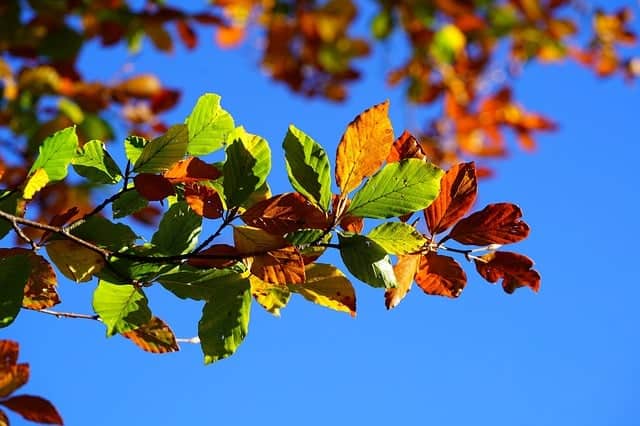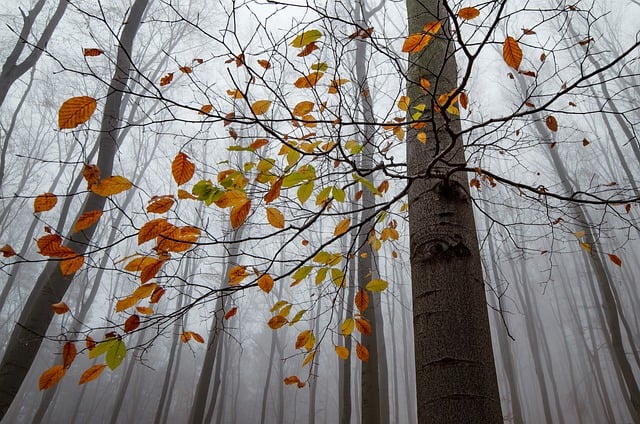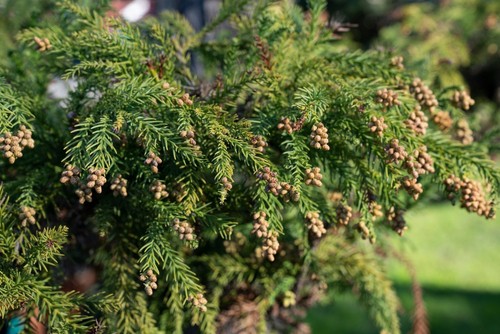When tree leaves start turning brown early, it can be an alarming sight for homeowners and gardeners alike. Brown leaves on a tree can indicate a variety of different problems, and it is important to diagnose the underlying cause in order to take the appropriate steps to address the issue.
Understanding tree leaves turning brown early can be a complex process. There are many factors that can contribute to the problem, including environmental stressors like drought or extreme temperatures, as well as pests and diseases that can infect the tree.
In some cases, the problem may be related to improper planting or care, such as over-fertilization or root damage.
Despite the many potential causes of early leaf browning, there are steps that homeowners and gardeners can take to prevent the problem from occurring and to address it when it does.
By understanding the common causes of early leaf browning and taking proactive steps to care for trees, it is possible to keep trees healthy and looking their best.
Key Takeaways
- Early leaf browning can be caused by a variety of factors, including environmental stressors, pests and diseases, and improper care.
- Diagnosing the underlying cause of early leaf browning is crucial in order to take the appropriate steps to address the issue.
- Taking proactive steps to care for trees, such as proper watering and fertilization, can help prevent early leaf browning and keep trees healthy.
Also don’t miss:
- Tips of Snake Plant Turning Brown
- Tips of Orchid Leaves Turning Brown
- Tips of Air Plant Turning Brown
Understanding Tree Leaves Turning Brown Early

When tree leaves start turning brown early, it can be a sign of stress or damage. Brown leaves on trees can be caused by a variety of factors, including environmental stress, diseases, pests, and cultural problems.
One of the most common causes of leaves turning brown early is environmental stress. Trees may be exposed to extreme temperatures, drought, or excessive moisture, which can cause leaves to dry out and turn brown. Additionally, exposure to pollutants or chemicals can also cause discoloration of leaves.
Diseases and pests can also cause leaves to turn brown early. Fungal diseases such as leaf spot and anthracnose can cause browning of leaves, while insect infestations can cause leaves to yellow and eventually turn brown. It is important to identify the specific disease or pest causing the problem to determine the appropriate treatment.
Cultural problems such as over-fertilization, improper pruning, and damage to the roots can also cause leaves to turn brown. Over-fertilization can cause salt buildup in the soil, which can damage roots and cause leaves to turn brown.
Improper pruning can damage the tree and reduce its ability to take up water and nutrients, leading to browning of leaves. Damage to the roots can also reduce a tree’s ability to take up water and nutrients, causing leaves to turn brown.
Tree Leaves Turning Brown Early – 3 Common Problems
When tree leaves turn brown early, it is usually a sign of stress. There are several reasons why this might happen, including drought, overwatering, insufficient watering, lack of water, too much fertilizer, over-fertilization, fungal infections, insects and pests, strong winds, frost damage, and transplant shock. In this section, we will explore some of the most common causes of early browning in trees.
1. Insects and Pests
Insects and pests can cause early browning of tree leaves by feeding on them or laying eggs on them. Some of the most common insects and pests that can cause this problem include borers, aphids, spider mites, and scale insects.
These pests can be controlled using insecticides or by introducing natural predators like ladybugs or lacewings.
2. Fungal Infections
Fungal infections can also cause early browning of tree leaves. Some of the most common fungal infections that can cause this problem include anthracnose, powdery mildew, and leaf spot. These infections can be controlled using fungicides or by improving air circulation around the tree.
3. Transplant Shock
Newly planted trees are particularly susceptible to transplant shock, which can cause early browning of tree leaves. Transplant shock occurs when a tree is moved from one location to another and experiences stress due to changes in temperature, humidity, and soil conditions.
To prevent transplant shock, it is important to water the tree regularly and to provide it with the nutrients it needs to thrive.
Effects on Tree Health

When tree leaves turn brown early, it can have a significant impact on the overall health of the tree. Brown leaves are often a sign that the tree is stressed, sick, or dying. This can be caused by a variety of factors, including leaf scorch, wilt, or a lack of chlorophyll.
One of the most obvious effects of brown leaves on a tree is a reduction in photosynthesis. When leaves turn brown, they are no longer able to produce energy through photosynthesis, which can lead to a decrease in overall tree health. This can be particularly problematic for young trees or trees that are already struggling to survive.
In addition to reducing photosynthesis, brown leaves can also make the tree more vulnerable to pests and diseases. When a tree is stressed or sick, it is more susceptible to attack from insects and fungi. This can lead to further damage and even death if the problem is not addressed.
If a tree is showing signs of wilting or leaf scorch, it is important to take action quickly to prevent further damage. This may involve watering the tree more frequently, providing additional nutrients, or treating the tree with pesticides or fungicides.
In some cases, it may be necessary to prune the tree or even remove it entirely if it is beyond repair.
Preventive Measures and Solutions
To prevent tree leaves from turning brown early, there are several measures that can be taken. First, it is important to provide proper tree care, which includes regular pruning and watering. Hiring a certified arborist can help ensure that the tree is receiving the proper care it needs to thrive.
Another important factor to consider is the soil conditions. Trees require a healthy soil environment to grow and thrive. If the soil lacks nutrients, it can cause stress to the tree, which can lead to early leaf color change. Applying a layer of mulch around the base of the tree can help retain moisture and provide nutrients to the soil.
During hot summer months, trees can become stressed due to the extreme heat. To prevent early leaf color change, it is important to provide adequate water to the tree. This can be achieved by watering deeply and less frequently, rather than shallow and frequent watering.
In addition to proper tree care and soil conditions, there are also several solutions that can be implemented to prevent early leaf color change. One solution is to apply a foliar spray to the tree. This spray is designed to provide the tree with the necessary nutrients it needs to thrive.
Another solution is to apply a systemic insecticide to the tree. This will help prevent insect infestations, which can cause stress to the tree and lead to early leaf color change.
Frequently Asked Questions

What causes tree leaves to turn brown early?
There are several reasons why tree leaves may turn brown early, including stress caused by drought, pests, diseases, or environmental factors such as extreme temperatures or exposure to chemicals.
Trees that are planted in poor soil or that are not receiving enough water or nutrients may also experience early leaf browning.
How can I prevent my tree leaves from turning brown?
To prevent tree leaves from turning brown, it is important to provide adequate water and nutrients to the tree, especially during periods of drought or extreme temperatures.
Trees should also be planted in well-draining soil that is rich in organic matter and should be protected from pests and diseases.
What are some common reasons for leaves to turn brown and crispy?
Leaves may turn brown and crispy due to a lack of water, exposure to extreme temperatures, or pests and diseases. Over-fertilization or exposure to chemicals may also cause leaves to turn brown and crispy.
Are there any treatments for brown leaves on trees?
Treatment options for brown leaves on trees depend on the underlying cause. If the cause is a lack of water or nutrients, providing the tree with adequate water and fertilizer may help. If the cause is a pest or disease, treatment with an appropriate pesticide or fungicide may be necessary.
Why do some trees have brown leaves instead of green?
Trees may have brown leaves instead of green due to stress caused by environmental factors, pests, diseases, or nutrient deficiencies. In some cases, brown leaves may be a natural part of the tree’s growth cycle.
Is it normal for tree leaves to turn brown in the spring?
It is not normal for tree leaves to turn brown in the spring, as this is a time when trees are typically growing and producing new leaves. However, if the weather is unusually dry or cold, or if the tree is not receiving enough water or nutrients, early leaf browning may occur.

Hey, I’m Lisa and I’ve been an avid gardener for over 30 years. I love writing, talking and living in the garden! Feel free to connect with me on my socials below

